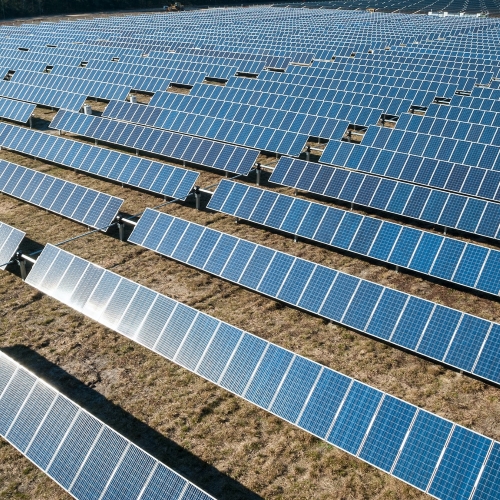22 February 2021
 Researchers at the University of South Australia are leading a national push to ensure the dream of renewable energy doesn’t become a nightmare of waste management.
Researchers at the University of South Australia are leading a national push to ensure the dream of renewable energy doesn’t become a nightmare of waste management.
Australia has the highest proportion of household photovoltaic (PV) systems in the world, with more than 21 per cent of homes – or around 2.59 million – now possessing a solar energy system.
With most PV systems paying themselves off in three to five years, the average 25-year life span of solar panels makes them an excellent investment, delivering a good return for decades after their cost is recovered.
Eventually, however, all good things come to an end, and increasingly, industry experts are starting to ask what we’re going to do with all these solar panels when they are due to be replaced.
In Australia alone it is estimated more than 100,000 tonnes of solar panels will enter the national waste stream by 2035.
Solar energy expert, Professor Peter Majewski, is leading research at UniSA’s Future Industries Institute (FII) to help establish a lifetime stewardship scheme for Australia’s PV industry, ensuring end-of-life strategies are in place long before solar waste peaks.
“We have time to plan for this and ensure the processes are in place, but we have to start acting now, as the right practices may take some time to implement,” Prof Majewski says.
“There are good stewardship programs in place for products such as paint and tyres in Australia, and we would like to see a similar system in place for solar, where the disposal process is pre-planned as an integral part of the product lifecycle.”
While retired solar panels are relatively safe and stable, they are classified as e-waste, meaning they cannot be put into landfill in Victoria. With similar bans likely to follow in other states, the need for alternative solutions is clear.
One major challenge facing the solar industry is the low recycle value of PV panels, coupled with the high energy requirements of the currently available collection and recycling processes.
“There is only a little over $5 in recyclable materials in each panel at current market value,” Prof Majewski says.
“The high volume of panels will eventually offset this low value to an extent, but at the moment, we can’t expect market forces alone to drive recycling, and investment is needed to establish a waste management scheme and to improve the technology available for that process.”
Prof Majewski’s team at FII are currently working on developing both policy and technological solutions to PV’s end of life problem, and he believes the integration of both dimensions will be key to a successful stewardship scheme.
“Regulation around collection and recycling targets will be important to drive the process initially, but developing the best disposal techniques is essential, and this may even influence manufacturing techniques and what goes into the panels to start with.”
End-of-life management for PV isn’t the only challenge facing the renewables industry, and a similar disposal problem exists in relation to the blades of wind turbines, which are large and notoriously difficult to recycle.
“These blades are the size of an airliner wing, and they have been built to withstand hurricane-force winds, so they are a big challenge when they get to the end of their life,” Prof Majewski.
“As with solar panels, that disposal challenge requires planning and preparation, but approached the right way it doesn’t have to be an insurmountable problem, and we are beginning to look at strategies for how to deal with these blades as they come offline.”
Notes to editors:
- Professor Peter Majewski is Research Professor in Advanced Materials at UniSA’s Future Industries Institute.
………………………………………………………………………………………………………………………
Media: Dan Lander | mobile: 0408 882 809 | email: dan.lander@unisa.edu.au



